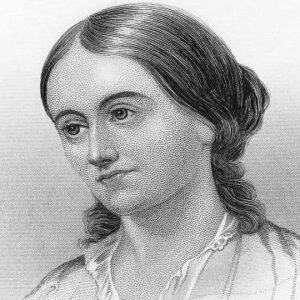Margaret Fuller was a powerful and sought-after women’s rights activist in the United States in the 1800s. She was one of the first feminists to appear in the country. Fuller was well-liked and known as the “best-read” person in New England. She was one of the first women to be allowed to use the Harvard College library. Margaret Fuller was a teacher before she became the editor of a transcendentalist journal called “The Dial.” She was also one of the first women to work as an editor and a foreign correspondent for the New York Tribune, an important American newspaper. As a foreign correspondent for the “New York Tribune,” she wrote more than 37 stories over the course of four years. Fuller was probably one of the most well-known and famous people of her time. She was known for her short temper, willingness to say what she thought, quick mind, and willingness to try new things. She was one of the most important people in the transcendentalist movement. She was also a famous writer, literary critic, book reviewer, and a harsh critic of society. “Woman in the Nineteenth Century,” one of her most important books, is thought to be one of the first U.S. books about feminism. Scroll down and keep reading this biography to find out more interesting and intriguing details about her childhood, personal life, and professional achievements in journalism and feminism.
Early years and childhood
Tim Fuller and Margaret Crane Fuller gave birth to Sarah Margaret Fuller in Cambridgeport, Massachusetts. Her father started teaching her to read and write when she was three years old.
Her father gave her the same kind of education that boys got at that time. She went to several schools and learned German, Italian, and Latin very well.
She went to the Port School in Cambridgeport in 1819, and then she went to the Boston Lyceum for Young Ladies. She also went to the Groton School for Young Ladies.
Margaret Fuller’s Career
In November 1834, her first piece of writing, a response to historian George Bancroft, was published in “The North American Review,” one of the first literary magazines in the United States.
In June 1835, she wrote one of her first reviews of a piece of literature for the magazine Western Messenger. She wrote reviews of the biographies of famous people like Hannah More and George Crabbe.
In 1835, her father died. This was a very sad event for her and put her family in a very bad financial situation. She became a teacher at the Bronson Alcott’s Temple School so she could support her family.
In April 1837, she was hired to teach at the Greene Street School in Rhode Island. She worked under journalist and teacher Hiram Fuller. A salary of $1000 per year was very high for her.
In 1839, she went to Boston and met a group of women with whom she talked about literature, history, the arts, and the need for education. Women who were part of the movement for women’s rights were also there.
She became the editor of the journal “The Dial” on October 20, 1839, and worked there until 1842. Because she wrote for the magazine, she became known as an important member of the transcendental movement.
In 1844, she wrote a book called “Summer on the Lakes” about her time with Native Americans, Ottawa tribes, and Chippewa tribes in Chicago, Milwaukee, Niagara Falls, and Buffalo, New York. The book was based on her experiences with these people.
She moved to New York in the fall of 1844 and started working as a literary critic for Horace Greeley’s “New York Tribune.” She later became one of the first women to run the magazine as an editor. Over the course of four years, she wrote over 250 columns for the newspaper.
Woman in the Nineteenth Century, her book, was published in 1845. Before it was made into a book, this piece of writing appeared in the magazine “The Dial.”
She was one of the first women to work as a foreign correspondent for the “New York Tribune” in 1846. She was sent on jobs to different parts of England and Europe. In four years, she sent 37 reports to the magazine.
She was one of the first women who thought women should have the same rights as men. She pushed for women to get an education and for them to be able to choose any job they wanted, not just “feminine” jobs like teaching or nursing.
Works of note
Woman in the Nineteenth Century, which came out in 1845, is thought to be one of the first books on feminism in the United States. The book is seen as one of the most important pieces of writing about feminism.
Personal History and Legacies
Around 1846, a revolutionary and marquis from Italy named Giovanni Angelo Ossoli met her. Later, she moved in with him in Florence, Italy. They had a child together, but there is no proof that they were married.
She was 40 years old when her ship sank near Fire Island, New York. Her body could not be found at the scene.
Estimated Net worth
Margaret is on the list of the most popular and richest activists. Wikipedia, Forbes, and Business Insider all say that Margaret Fuller has a net worth of about $1.5 million.
Trivia
This well-known American feminist author and journalist did not get along with other women her age when she was young.


